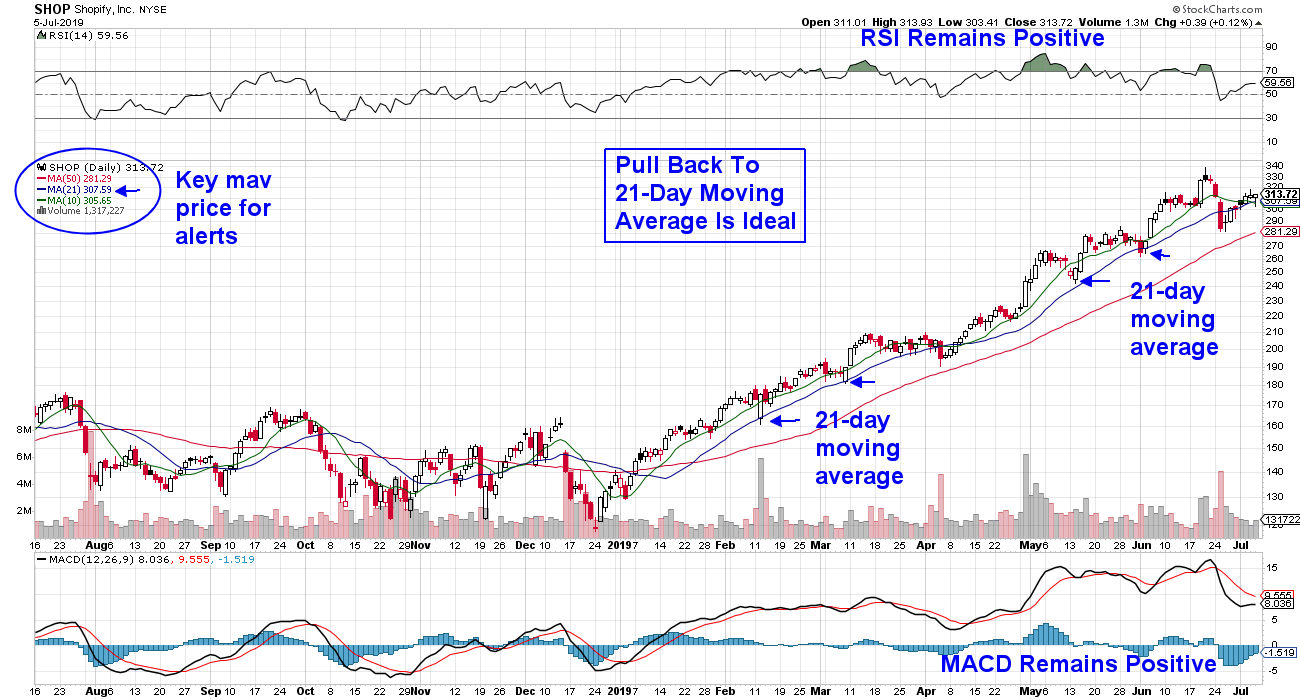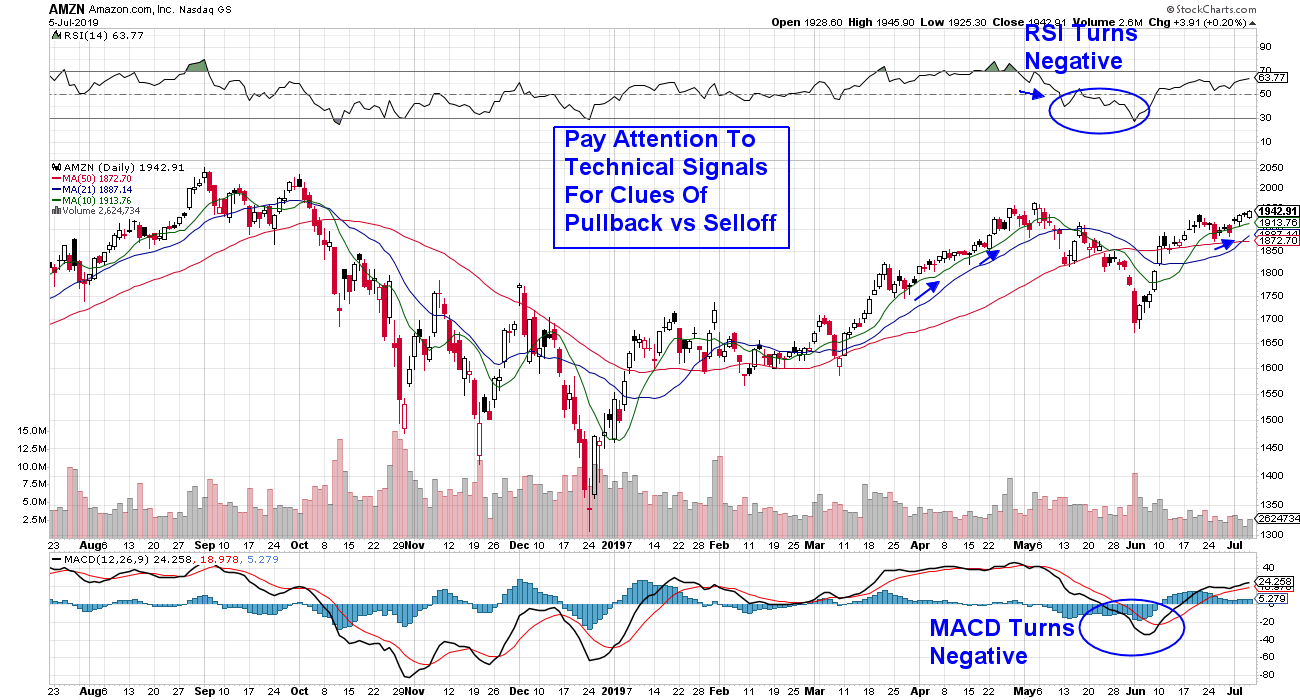It’s been quite a star-spangled week for the markets, with the S&P 500 and Nasdaq hitting a new high 3 out of their 4 sessions. One sector showing particular strength has been Technology, which also reached a new high as many underlying stocks are posting significant returns. While this bullish action may have you eager to jump into some of these fast Tech movers, chasing stocks hitting a new high in price can be the surest way to frustration, as the inevitable pullback will have you wishing you waited.
By contrast, waiting for these pullbacks presents a much better opportunity. Today, I'll reveal not only how to uncover top stock candidates, but also precise entry points that you can be alerted to upon their pullback - all with StockCharts.com.
To begin, when a stock pulls back, you’ll want to pay attention to its simple moving average. While you can use either the shorter-term 10-day or the longer-term 21-day moving average, you’ll want to check the stock’s chart to uncover which one is the better indicator. This is because, as you’ll see, each stock has its own “personality” that determines which moving average it tends to obey. In the example below, we reviewed top performer Shopify (SHOP) and found that a pullback to its 21-day moving average has been the best entry point.
DAILY CHART OF SHOPIFY , INC.

Now let's move on to uncovering top stock candidates. The best way to do this is by using StockCharts's SCTR rankings. This technical ranking system is very powerful, as it identifies the most technically sound and, in most cases, faster moving stocks in a given area of the markets.
We'll begin by using the Sector Summary on the first page of StockCharts.com. From there, you can access the stocks in the sub-Industry groups. For instance, try accessing the Technology sector and clicking on an industry group. Then, sort those stocks by their SCTR ranking – highest to lowest.
Once you’ve uncovered several candidates and identified the key moving average that works best for a pullback, you’ll be ready to set up an alert. StockCharts's alert tool will notify you (via email) that your stock has hit your entry point. You can access the setup information for your alerts here.
As with all trading, you’ll want to use additional indicators to make sure that your stock is only pulling back, not entering a downtrend. The two indicators I’ve found very helpful are the relative strength indicator (RSI) and the Moving Average Convergence/Divergence (MACD).
As you can see below, Amazon (AMZN) can normally be bought on a pullback to its 10-day simple moving average. However, in May, the dynamics shifted and the stock fell below both its 21- and 50-day moving averages, with both the RSI and the MACD turning negative at the same time. This was your signal that the near-term uptrend had reversed.
DAILY CHART OF AMAZON.COM, INC.
 There are other example of top-performing stocks that are at ideal buy points upon a pullback. Below is Semiconductor stock Analog Devices (ADI), which can be bought on a pullback to its 10-day simple moving average. By uncovering top candidates and saving them to your alerts, you can not only improve your returns, but you can also lower your frustration level.
There are other example of top-performing stocks that are at ideal buy points upon a pullback. Below is Semiconductor stock Analog Devices (ADI), which can be bought on a pullback to its 10-day simple moving average. By uncovering top candidates and saving them to your alerts, you can not only improve your returns, but you can also lower your frustration level.
DAILY CHART OF ANALOG DEVICES (ADI)

Warmly,
Mary Ellen McGonagle,
MEM Investment Research
